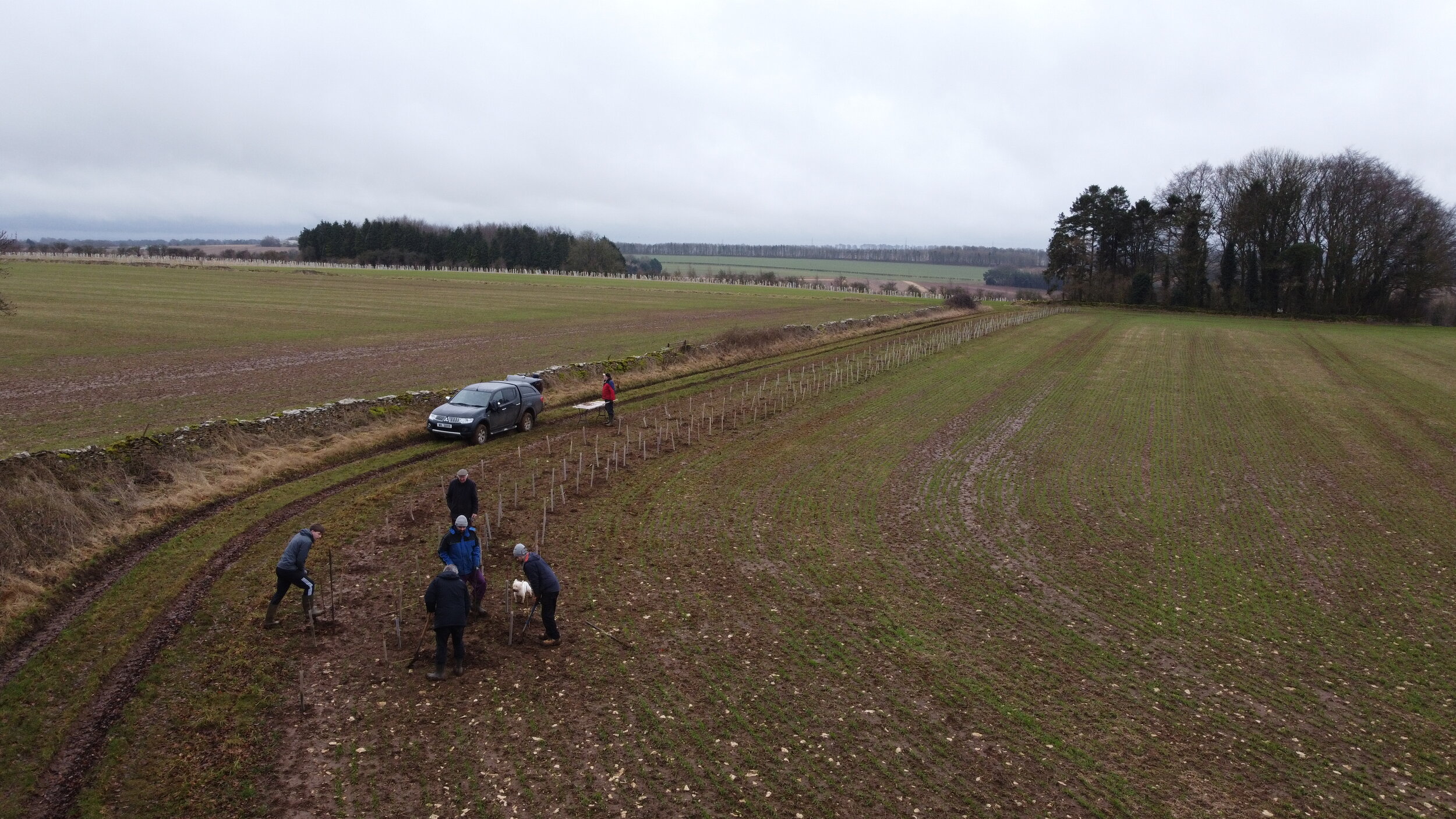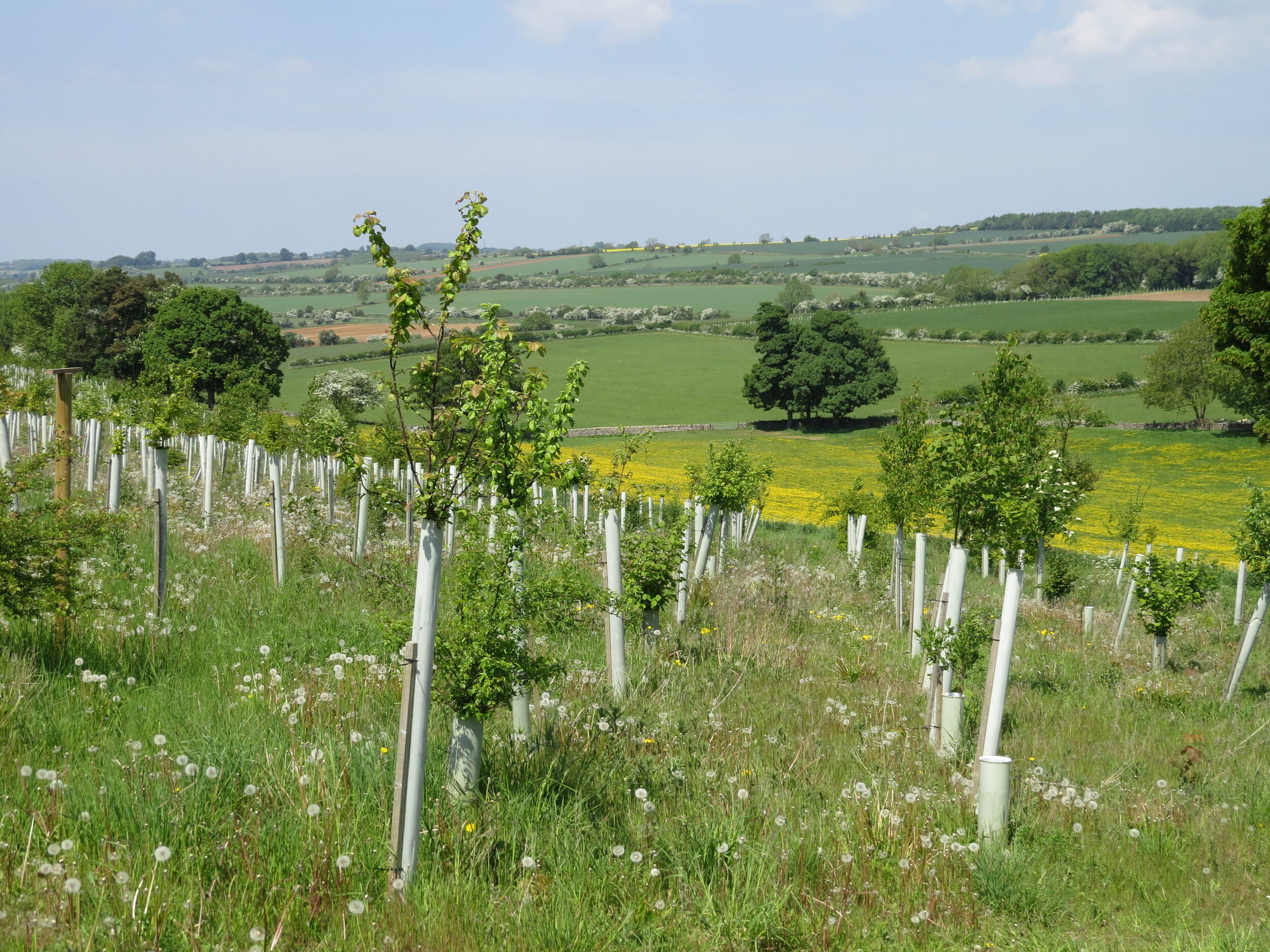Lower Hampen Farm
1,200 trees planted February 2021 | near Cheltenham, Gloucestershire
~565 tonnes of carbon sequestered
by 2051










The Handy family have been farming arable and livestock at Lower Hampen farm for over 220 years. Clive and Lydia Handy are the 7th generation custodians of this magical 330 acre farm high up in the Cotswold AONB. Caring for the environment and creating a haven for wildlife is integral to their mixed farming system. They farm under a Higher Level Stewardship scheme following regenerative principals and are always looking to increase biodiversity and improve soil health for future generation to enjoy.
Limestone brash underlies the arable fields which follow an 8 year rotation including 4 years of herbal leys which are mob grazed by a commercial flock of sheep. This improves the soil structure and soil biome as well as feeding it and thereby reducing the need for artificial fertilizers when the fields are planted with cereals. On the areas with more clay, the land is very old permanent pasture and calcareous wildflower meadows where there is evidence of medieval settlements and old farming lynchets. These species rich grasslands are grazed by rare breed sheep, Devon Closewools and Devon Ruby Red Cattle. The farm is a patchwork of small fields bounded by dry stone walls and hedges interspersed with copses and new plantations and a disused railway that runs across the farm, all of which provide fabulous habitat for wildlife and safe corridors through which to travel. There is also a 10 acre wood, of which a 4 acre section is being replanted after a clear fell of trees infected with ash dieback.
Other projects scheduled for Jan/Feb 2021 include the replanting of 500m of hedgerows and ‘gapping up’ of others. These planting will coincide with the two new ‘Optimum Shelterbelts’ designed by John Davis. Both shelterbelts border arable land and the benefits that these shelterbelts provide will be monitored by the Organic Research Institute Cirencester. Their research will record changes/improvements to stock, arable crops, wildlife biodiversity, soil structure, soil erosion and water filtration as well as carbon sequestration. The shelterbelts will also link existing wildlife habitats.



